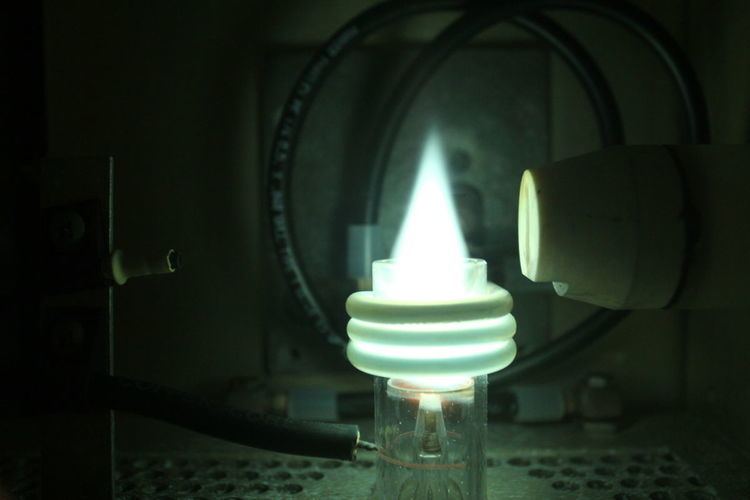 | ||
An inductively coupled plasma (ICP) or transformer coupled plasma (TCP) is a type of plasma source in which the energy is supplied by electric currents which are produced by electromagnetic induction, that is, by time-varying magnetic fields.
Contents
Operation
There are three types of ICP geometries: planar (Fig. 2 (a)), cylindrical (Fig. 2 (b)), and half-toroidal (Fig. 2 (c)).
In planar geometry, the electrode is a length of flat metal wound like a spiral (or coil). In cylindrical geometry, it is like a helical spring. In half-toroidal geometry, it is toroidal solenoid cut along its main diameter to two equal halves.
When a time-varying electric current is passed through the coil, it creates a time-varying magnetic field around it, which in turn induces azimuthal electric field in the rarefied gas, leading to the formation of the figure-8 electron trajectories providing a plasma generation (see Hamilton-Jacobi equation in electromagnetic fields). Argon is one example of a commonly used rarefied gas.
Applications
Plasma electron temperatures can range between ~6 000 K and ~10 000 K (~6 eV - ~100 eV), comparable to the surface of the sun. ICP discharges are of relatively high electron density, on the order of 1015 cm−3. As a result, ICP discharges have wide applications where a high-density plasma (HDP) is needed.
Another benefit of ICP discharges is that they are relatively free of contamination because the electrodes are completely outside the reaction chamber. By contrast, in a capacitively coupled plasma (CCP), the electrodes are often placed inside the reactor and are thus exposed to the plasma and subsequent reactive chemical species.
